|  Birds of East Asia
Birds of East Asia
Mark Brazil
Helm Field Guides, colour illustrations, 528pp, index, paperback
Christopher Healm, London, 2009. ISBN: 9780713670400
This is the first single volume guide ever devoted to the eastern Asian
avifauna.The eastern Asian region, centring especially on the major
islands off the continental coast (including Japan and Taiwan) and the
immediately adjacent areas of the Asian continent from Kamchatka in
the north and including the Korean Peninsula are an important centre
of endemism. Birds endemic to this region include representatives of
many of the major families, from the world's largest eagle—Steller's
Sea Eagle—to the tiny Formosan Firecrest. The guide features the
most up-to-date text available, which, in conjunction with extensive
colour plates throughout, facilitates the field identification of all
of the species known from the region. Colour distribution maps enhance
the text by providing a visual analysis of the summer, winter and migratory
ranges of all species.
AU$69.95 [Please quote item number 123056]
 Conflict,
Terrorism and the Media in Asia Conflict,
Terrorism and the Media in Asia
Benjamin Cole (editor).
Paperback, 234 x 156mm
Routledge, UK, 2009. ISBN: 9780415486330
This major new study examines a wide range of sub-national conflicts,
showing how, despite their significant differences, they share the role
of the media as interlocutor, and exploring how the media exercises
this role. The book raises a number of issues concerning how the media
report different forms of political violence and conflict, including
issues of impartiality in the media's relations with governments and
insurgents, and how the focus on the 'War on Terror' has led to some
forms of violence - notably those employed by states for political purposes
- to be overlooked. As the issue of international terrorism remains
one of the most pressing issues of the modern day, this is a significant
and important book which will interest the general reader and scholars
from all disciplines.
AU$64.00 [Please quote item number 128172]
 Legacies
of World War II in South and East Asia Legacies
of World War II in South and East Asia
David Koh Wee Hock
xvii, 212pp, index, hardback
Institute of Asian Studies, Chulalongkorn Uni, Singapore, 2008.
ISBN: 9789812304681
Sixty years after the end of World War II, the political and social
fallout from the war is alive and divisive, as scholars in this volume
show. One example is how former Japanese prime minister Junichiro Koizumi's
visit to the Yasukuni Shrine prevented China, Japan and South Korea
from sitting down together to talk about Northeast Asian integration,
and wider Asian integration. Another example is the question of comfort
women. Former Japanese prime minister Shinzo Abe's statement that there
is no evidence that Japan's government or army forced women to work
in military brothels during the War appeared to go back on a 1993 apology
for the comfort women. How such issues of history are dealt with by
countries of this region has an effect on contemporary relations among
the major powers contending for leadership in East Asia.
AU$69.95 [Please quote item number 128238]
|
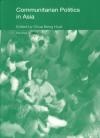 Communitarian
Politics in Asia Communitarian
Politics in Asia
Chua Beng Huat (editor)
xiii + 191pp, index, paperback
Routledge, UK 2009. ISBN: 9780415480307
This book examines instances in southeast and east Asian countries where
communitarianism is both articulated as national ideology and embedded
as the ethos of social life and assesses the relative merits of a set
of practices in their respective local political context. It not only
augments existing international debate on liberalism and communitarianism
but also provides empirical examples of communitarian political practices
that will substantiate and/or refute conceptual points, such as redistributive
justice and costs to individuals, in this ongoing debate.
AU$64.00 [Please quote item number 128171]
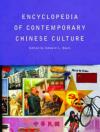 Encyclopedia
of Contemporary Chinese Culture Encyclopedia
of Contemporary Chinese Culture
Edward L. Davis (editor)
xxxiv + 786pp, index, paperback
Routledge, London, 2009. ISBN: 9780415777162
This long-awaited paperback edition is a useful reference book. It contains
nearly 1,200 entries written by an international team of specialists
to enable readers to explore a range of diverse and fascinating cultural
subjects, from prisons to rock groups, underground Christian churches
to TV talk shows and radio hotlines. Experimental artists with names
such as 'Big-Tailed Elephants' and 'The North-Pole Group' nestle between
the covers alongside entries on lotteries, gay cinema, political jokes,
sex shops, theme parks, 'New Authoritarians' and 'Little Emperors'.
These, as well as more traditional subjects and biographical entries,
are indexed under 18 categories for easy thematic reference.
AU$128.00 [Please quote item number 127836]
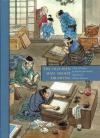 The
Old Man Mad About Drawing. A Tale of Hokusai The
Old Man Mad About Drawing. A Tale of Hokusai
Francois Place
Colour illustrations, as well as Hokusai prints, 105pp with glossary,
dust jacket.
David R Godine, Boston, 2004. ISBN: 9781567922608
Written for children, the author brings to life the immortal Japanese
illustrator and printmaker Hokusai. Trained early as an engraver, Hokusai
studied under the master Sunsho, producing illustrated volumes of verse.
His first manga volume followed in 1814, after he abandoned the traditional
style of engraving to perfect the technique of the coloured woodcut,
in what many consider his greatest work, The 36 Views of Mt Fuji. The
exuberance of his life is marvellously conveyed in Place's tribute to
an artist who clearly ranks among his heroes. Both have the same genius
for draughtsmanship, the perfectly defined, energetic stroke, the subtle
wash. We see the humour and pathos of Hokusai's life, recorded through
the eyes of a young apprentice. This is a lovely book which appeals
to children from upper primary through to adults who are captured by
its delightful presentation. Just the book to get younger readers interested
in Japanese art and culture, and ideal for young people whose imagination
has been caught by manga but are unaware of how it fits into traditional
Japanese culture.
AU$41.95 [Please quote item number 123694]
|
We
are sorry to have recently lost the services of our founding editor Francesca
Beddie. Since establishing the newsletter in 2005, Francesca has assiduously
promoted the aims of the ASAA through Asian Currents. She goes with our
thanks and warmest wishes for the future. Our new editor is Allan Sharp,
who has worked in journalism and public relations for many years. Allan
will continue to build on Francesca’s work and encourages you to
send your ideas to allan.sharp@homemail.com.au
on topics that would be useful to you.

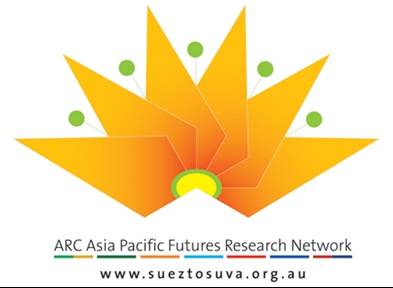


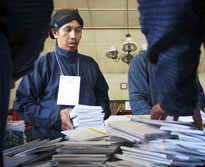

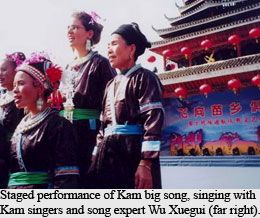 Catherine
Ingram
Catherine
Ingram  Birds of East Asia
Birds of East Asia Conflict,
Terrorism and the Media in Asia
Conflict,
Terrorism and the Media in Asia Legacies
of World War II in South and East Asia
Legacies
of World War II in South and East Asia Communitarian
Politics in Asia
Communitarian
Politics in Asia Encyclopedia
of Contemporary Chinese Culture
Encyclopedia
of Contemporary Chinese Culture  The
Old Man Mad About Drawing. A Tale of Hokusai
The
Old Man Mad About Drawing. A Tale of Hokusai